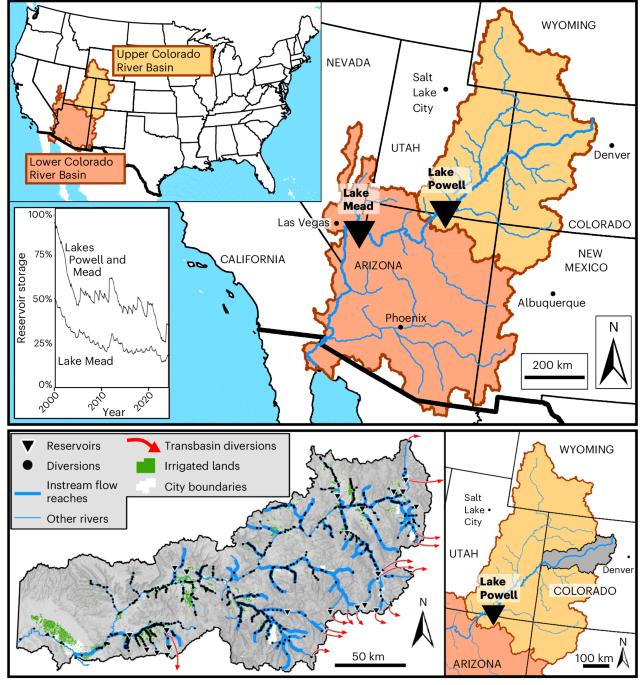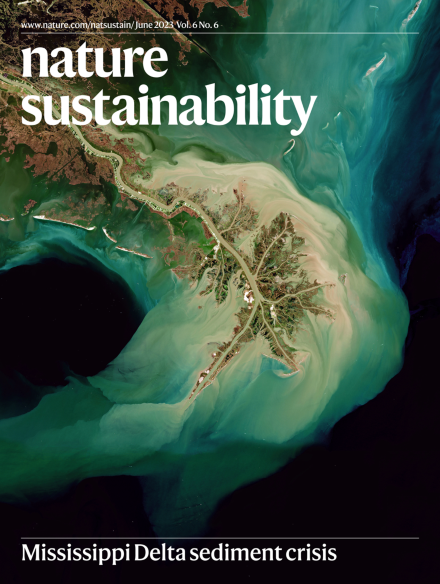科罗拉多河重新分配的战略性环境水权市场
IF 27.1
1区 环境科学与生态学
Q1 ENVIRONMENTAL SCIENCES
引用次数: 0
摘要
科罗拉多河系统是世界上分配最过度的流域之一,难以向美国西南部和墨西哥供水。因此,该盆地90%的本地鱼类濒临灭绝、受到威胁或灭绝。在持续24年的特大干旱的推动下,美国拨出40多亿美元用于缓解干旱,其中包括水市场交易,向农场、城市和工业支付费用,以减少在美国西南部的用水。我们开发了一个模型,说明战略性水市场如何能够恢复濒危鱼类的栖息地,将河流源头科罗拉多州的水文学、生态学、经济学和水权结合起来。虽然以最低成本减少用水量改善了超过三分之一的可恢复河流栖息地,但从战略上讲,增加8%的支出几乎是栖息地改善的三倍。10笔交易以1%的成本获得了26%的改进。不依法保护节约用水的水市场比依法保护节约用水的市场成本效益低29%。总体而言,战略投资和法律改革带来了巨大的生态效益。科罗拉多河是北美的重要水源,对其的过度开发已经导致当地鱼类的健康状况急剧下降。在科罗拉多河源头开发战略性水市场可以在保护水资源的同时恢复栖息地。本文章由计算机程序翻译,如有差异,请以英文原文为准。

A strategic environmental water rights market for Colorado River reallocation
The Colorado River system is among the world’s most overallocated basins, struggling to supply water to the southwestern United States and Mexico. Consequently, 90% of the basin’s native fish species are endangered, threatened or extinct. Driven by a 24-year megadrought, the United States allocated over US$4 billion for drought mitigation, including water market transactions that pay farms, cities and industries to divert less water across the US Southwest. We developed a model of how strategic water markets can restore imperilled fish habitat, integrating hydrology, ecology, economics and water rights within the river’s headwater state of Colorado. While least-cost water-use reductions improve over one-third of restorable river habitat, strategically spending 8% more nearly triples habitat improvement. Ten transactions attain 26% of that improvement for 1% of the cost. Water markets that do not legally protect conserved water are 29% less cost-effective than markets that do. Overall, strategic investing and legal reforms yield outsized ecological benefits. Over exploitation of the Colorado River system, a critical water supply for North America, has resulted in a steep decline in the health of native fish species. Developing strategic water markets in the Colorado River headwaters can restore habitat while conserving water resources.
求助全文
通过发布文献求助,成功后即可免费获取论文全文。
去求助
来源期刊

Nature Sustainability
Energy-Renewable Energy, Sustainability and the Environment
CiteScore
41.90
自引率
1.10%
发文量
159
期刊介绍:
Nature Sustainability aims to facilitate cross-disciplinary dialogues and bring together research fields that contribute to understanding how we organize our lives in a finite world and the impacts of our actions.
Nature Sustainability will not only publish fundamental research but also significant investigations into policies and solutions for ensuring human well-being now and in the future.Its ultimate goal is to address the greatest challenges of our time.
 求助内容:
求助内容: 应助结果提醒方式:
应助结果提醒方式:


